
Javier Domínguez Hernández, Associate Professor Engineering & Architecture, University of Zaragoza, Spain. Registered architect and engineer.
Javier started his career, working from 1988 -1990 and 1994 -1995, as Director of Research and Development in Pikolín, S.A., a bedding industry located in Zaragoza, Spain. From 1991 -1992 he was assistant professor in the field of Theory of Structures. In 1995, he was appointed to a tenured associate professor position in the area of Construction Engineering, both belonging to the department of Mechanical Engineering at the College of Engineering and Architecture where since 2013 he holds the Head of Department.Javier was born in Zaragoza, Spain, in 1963. He holds Bs. Ind. Eng., Ms. Mech. Eng. and Ph.D. degrees from the University of Zaragoza and a Ms. Arch. degree from the University of Houston (Texas).

Javier Carnicer, Global TS&D Director at Dow Polyurethanes and ce|de|pa Director.
Javier Carnicer is representing ce|de|pa, Dow’s and SAIP’s global panel development center with a state-of-the-art and industrial-scale line fully devoted to testing and prototyping, located in Tudela, Spain. The center was founded by Dow and SAIP in 2011 to bring sandwich panel technology and innovation to market.
Javier has been working for Dow since 1987 and currently hold the role of a global TS&D Director at Dow Polyurethanes and is located Spain. Javier was also the President of IPUR, Spanish Rigid Polyurethane Industry Association from 2008 - 2012 and he is now the President of ANDIMAT, Spanish Association of Insulation materials. Javier was born in Zaragoza, Spain, in 1962. He earned a master’s degree in chemistry from the University of Zaragoza.
For those who didn’t attend the Europe 2015 Conference, we report hereinafter the main contents shown by our two valued speakers.
Enjoy your reading!
The value of prefabrication and trends in construction
Javier Domínguez, Associate Professor Engineering & Architecture at the University of Zaragoza, Spain
All the technical, technological and scientific advances that have allowed the humanity to gradually improve the citizens welfare, have not been applied in the same way to the construction industry.
Construction, particularly of residential buildings, continues using traditional processes, fundamentally artisanal procedures.
The artisanal crafting of products (such as a woman knitting a scarf) is considered as an unusual, inefficient and uncompetitive activity in our technological society. Nevertheless, placing bricks for making a wall or closing a façade is a common practice in the construction industry.
Both are artisanal processes, being the latest admitted and non admitted the former.
Since traditional construction processes have been able to satisfy all the perceived needs in buildings, these processes have not experienced a technical evolution that provides actual competitive advantages for the final user.
An industrial product is always imposed to the craft ones when it is able to meet all human needs more efficiently. Then, what is the reason why industrial construction processes do not meet the residential construction needs?
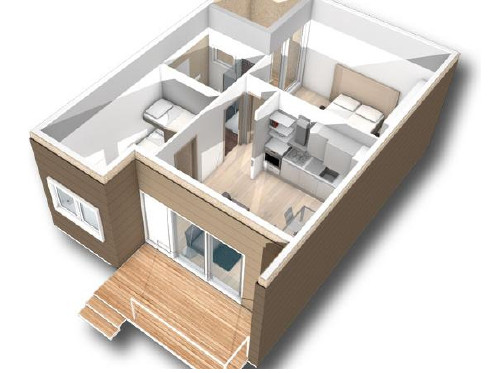
Nowadays building design is based on singular architectural solutions, usually valid for a single project and without the objective of being replicated. They are mostly thought and directed by people with artistic preparation.
Even the so called “High Tech” buildings are just based on more advanced materials, but assembled in artisanal ways.

Therefore, they should be denominated “High Craft” buildings. Many buildings parts and pieces have to be ordered and singularized for every particular building, while in an industrial process (even for making a singular product), standardized parts are used and assembled.
The technical world tends to a general quantitative analysis and maybe a subjective, qualitative approach introducing concepts with a difficult scientific approach it is needed. One of these concepts might be habitability, in the sense that industrialized construction needs an inhabitable approach.
There have been quite a number of prefabrication initiatives that have been successful from the technical point of view but after a few years they have been abandoned, falling into disrepair due to its deficiencies for living. The current state of the Nakagin Capsule Tower of Tokyo, Japan is a good example of this situation (see pictures below).
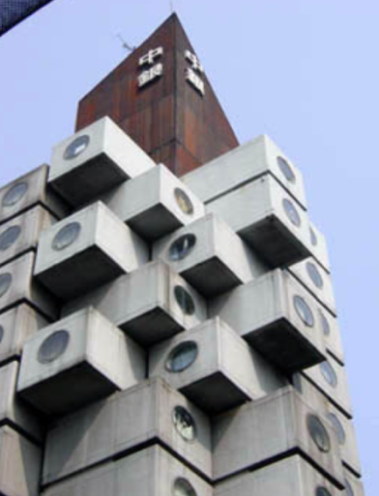
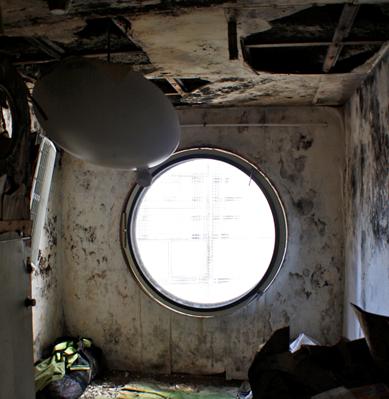
A residential building requires more than a succession of technical qualities. The needs are totally different, to mention home feeling, cultural acceptance and integration with the surroundings.
Industrialized products have not been able to incorporate these considerations: singularity, habitability and all previous subjective issues. In the residential scope, the technical advantages by themselves do not impress consumers. For that reason, penetration of industrial prefabricated processes is higher in industrial buildings, where all these subjective requirements are less decisive.
The challenge to dominate the market is designing industrialized products for construction which integrate all these needs of the residential sector.
The prefabrication market can provide all the technical qualities but has to undergo a thorough research to incorporate the singularity, habitability and subjective issues associated to the human requirements.
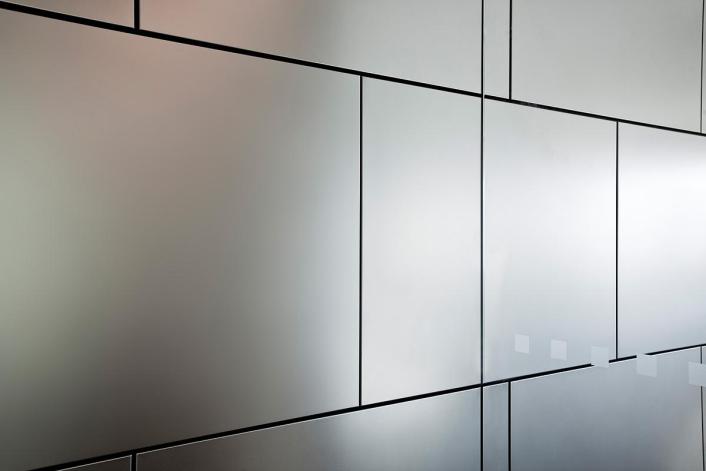

Human needs: singularity, habitability, subjective issues, satisfaction
The Role of Insulated Metal panels (IMP)
Within all the prefabrication products existing in the industry, Insulated Metal panels (IMP) have and are playing a key role:
To achieve the objective of diversifying and enlarging the IMP applications in the residential construction industry, only the innovative development centers driven by leading companies can play a key role:
the Development Center for Continuous Panels ce|de|pa constitutes a pioneer initiative for the technical innovation of insulated metal panel solutions (IMP), by combining the best technical features, a comprehensive and integrated treatment of the residential sector needs and the collaboration with the best research teams.
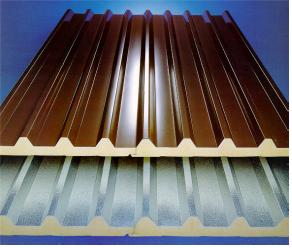
How the global panel development center ce|de|pa helps to accelerate innovation
Javier Carnicer, Global TS&D Director at Dow
As prof. Dominguez has explained, the challenge and opportunity for PU Insulated Metal Panels to grow into construction, more in particular into residential construction, is not only the ability to generate superior technical solutions, but also to providing solutions which satisfy “human needs”.
What is ce|de|pa?
Dow and SAIP have established a unique development center for sandwich panel manufacturers to develop polyurethane formulations and application solutions for the construction market.
ce|de|pa was created to integrate multidisciplinary skills and competencies, making it possible to innovate into new products, processes and panel solutions.
In the way it was created, it also opens the doors for collaboration with the best research teams.
ce|de|pa as a toolbox to enable for innovation, offers the possibility to work on different processes (see box on the right), with the possibility to enhance it, depending on the innovation opportunities.
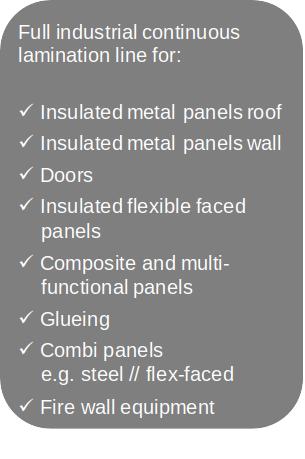
The Value of ce|de|pa
ce|de|pa generates value by:

ce|de|pa allows Dow to innovate on the chemistry/the PU formulations and SAIP to innovate on the process. Both together to innovate on the product and ultimately, the customers to manufacture superior products than the existing ones.
How does ce|de|pa help to accelerate innovation into construction markets?
In established economies, construction companies have to adapt to ever changing industry influences in order to stay competitive:
It is not a secret for any of us, all the different trends and changes affecting our industry and the accelerating pace, making it more and more difficult to adapt, and to cope with new needs.
Accelerating new developments is now more strategic than ever.
ce|de|pa can help to keep pace with these developments.
In its short life ce|de|pa has already contributed to accelerate innovation by developing, prototyping, testing panels or innovating on the panel production process.
Good examples are:
In summary: acceleration of new projects and mitigation of risks.
How does ce|de|pa help to reduce the start-up costs of a production line?
Customers benefit from ce|de|pa helping to reduce the startup cost of a new production line by:
1. Training the operators directly in ce|de|pa before installing the line: learning by doing flanked by experts while they experiment practically how to manage critical phases safely and be confident along the whole production process. Definitely ce|de|pa shortens their learning curve and mitigate risks.
2. Testing new equipment in advance: thanks to the presence of an industrial scale line, new equipment can be verified and tested up to their maximum so that performance and limits are absolutely enlightened, reducing any potential issue of the starting phase.
3. Testing new formulations in advance for a smooth and cost effective introduction of new formulations at the customer, also from certification point of view ce|de|pa allows the customer a head start for new panels before actually producing them on site. Thanks to these features, ce|de|pa helps to mitigate the risk of the investment.
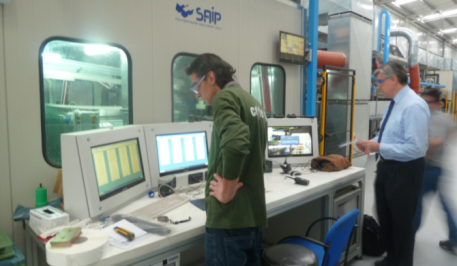
A few more examples where this Dow and SAIP development center has had a very important contribution:
Dow latest innovation, the new halogen-free PIR solution VORATHERMTM CN 100 series, that was fully tested and trialed in ce|de|pa including Bs1d0 certification, providing a more sustainable halogen free insulation and achieving top euroclass fire reaction.

More Sustainable Halogen-free Insulation

Enables Top Euroclass Fire Reaction up to Bs-1,d0
What are panel producers saying about ce|de|pa?
Customers from all over the world visit ce|de|pa to testing SAIP‘s unique panel development line:
Quoting Mr Francesco Manni, Ceo at Gruppo MANNI SpA in Italy “a tool like ce|de|pa allows operators like us to move forward by testing the limits of new technologies to achieve top results”.
Or JCS PANEX group from Georgia that could observe how a continuous production line works and experienced the opportunities and support offered by ce|de|pa before investing in their new line.
Or a leading board producer in China that had its crew trained in ce|de|pa in advance optimizing the investment.

Conclusions:
While other technologies has evolved, residential construction remains fundamentally artisanal and based on traditional processes.
Designing industrial products for subjective needs, is the challenge to dominate residential construction markets. Deploying insulated metal panel technology and industry innovation can enable to foster the evolution in prefabricated industrial construction.
ce|de|pa the unique panel development center owned by SAIP and DOW can be used by the industry to fully develop, prototype and test panel solutions, innovating on the product and production process to achieve the desired objective.
Open Attachment